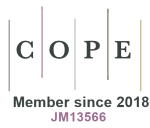From reactive medicine to precision medicine
DOI:
https://doi.org/10.33393/gcnd.2021.2316Keywords:
Genomics, Patient characterization, Personalized medicine, Precision medicine, TranscriptomicsAbstract
In recent years, there has been increased awareness of a concept of medicine based on individual differences taking into consideration genetic variability, environment, characteristics of the microbiome and individual lifestyles. It makes use of genomics, transcriptomics, proteomics and metabolomics techniques, obtaining a large amount of information which enables a more precise characterization of the patient. This model expands to the principles of prediction, prevention, personalization and participation, including all medical specialties. In nephrology, the application of precision medicine could play a central role, thanks to the information available today in multiple fields: for example the impact of alterations in the intestinal microbiota on the progression of chronic renal failure, in polycystic disease, in diabetic nephropathy and in the personalized approach to the transition period before the beginning of hemodialysis therapy.
References
- Annovi G. Cos’è la medicina di precisione. Forward. 2016. Online https://forward.recentiprogressi.it/it/rivista/numero-1-medicina-di-precisione/articoli/cos-e-la-medicina-di-precisione/
- Torrisi AM, Granata A. Indicatori bibliometrici delle riviste di Nefrologia: criticità e pregi. G Ital Nefrol 2016;33:1-18. Online https://giornaleitalianodinefrologia.it/en/2016/12/indicatori-bibliometrici-delle-riviste-di-nefrologia-criticita-e-pregi/
- Gameiro GR, Sinkunas V, Liguori GR, Auler-Júnior JOC. Precision Medicine: changing the way we think about healthcare. Clinics (São Paulo). 2018;73:e723. https://doi.org/10.6061/clinics/2017/e723 PMID:30517307 DOI: https://doi.org/10.6061/clinics/2017/e723
- Bittencourt MS. From Evidence-Based Medicine to Precision Health: Using Data to Personalize Care. Arq Bras Cardiol. 2018;111(6):762-763. https://doi.org/10.5935/abc.20180240PMID:30517371 DOI: https://doi.org/10.5935/abc.20180240
- Issa AM. Personalized medicine and the practice of medicine in the 21st century. McGill J Med. 2007;10(1):53-57. PMID:18523593 DOI: https://doi.org/10.26443/mjm.v10i1.625
- Vogel F. Moderne problem der humangenetik. Ergeb Inn Med U Kinderheilk. 1959;12:52-125. DOI: https://doi.org/10.1007/978-3-642-94744-5_2
- Pulciani S, Di Lonardo A, Fagnani C, Taruscio D. P4 Medicine versus Hippocrates. Ann Ist Super Sanita. 2017;53(3):185-191. PMID:28956796
- Pecci A, Panza E, Pujol-Moix N, et al. Position of nonmuscle myosin heavy chain IIA (NMMHC-IIA) mutations predicts the natural history of MYH9-related disease. Hum Mutat. 2008;29(3):409-417. https://doi.org/10.1002/humu.20661 PMID:18059020 DOI: https://doi.org/10.1002/humu.20661
- Psaty BM, Dekkers OM, Cooper RS. Comparison of 2 Treatment Models: Precision Medicine and Preventive Medicine. JAMA. 2018; 320 (8)751-752. https://doi.org/10.1001/jama.2018.8377 PMID: 30054607 DOI: https://doi.org/10.1001/jama.2018.8377
- Granata M, Canto C, Mazzarino MC, Fatuzzo P, Granata A. [Which genetic testing in renal disease]. G Ital Nefrol. 2015;32(5):gin/32.5.3. PMID:26480254
- Collins FS. Shattuck lecture—medical and societal consequences of the Human Genome Project. N Engl J Med. 1999;341(1):28-37. https://doi.org/10.1056/NEJM199907013410106PMID:10387940 DOI: https://doi.org/10.1056/NEJM199907013410106
- National Research Council (US) committee on a Framework for Development a New Taxonomy of Disease. Toward Precision Medicine: Building a knowledge network for biomedical research and a new taxonomy of disease Washington (DC): National Academies Press (US); 2011. pp 142 Online https://www.ncbi.nlm.nih.gov/books/NBK91503/ (Accessed July 2021)
- Barbagallo C, Passanisi R, Mirabella F, et al. Upregulated microRNAs in membranous glomerulonephropathy are associated with significant downregulation of IL6 and MYC mRNAs. J Cell Physiol. 2019;234(8):12625-12636. https://doi.org/10.1002/jcp.27851 PMID:30515781 DOI: https://doi.org/10.1002/jcp.27851
- Goutsouliak K, Veeraraghavan J, Sethunath V, et al. Towards personalized treatment for early stage HER2-positive breast cancer. Nat Rev Clin Oncol. 2020;17(4):233-250. https://doi.org/10.1038/s41571-019-0299-9 PMID:31836877 DOI: https://doi.org/10.1038/s41571-019-0299-9
- Delgado-Goni T, Miniotis MF, Wantuch S, et al. The BRAF inibitor vemurafenib activates mitochondrial metabolism and inhibits hyperpolarized pyruvate-lactate exchang in BRAF mutat human melanoma cells. Mol Cancer Ther. 2016;15(12):2987-2999. https://doi.org/10.1158/1535-7163.MCT-16-0068 PMID:27765851 DOI: https://doi.org/10.1158/1535-7163.MCT-16-0068
- Mendell J, Freeman DJ, Feng W, et al. Clinical Translation and validation of a Predictive biomarker for Patritumab, an anti-human Epidermal Growth Factor Receptor 3 (HER3) monoclonal antibody, in patients with advanced non-small cell lung cancer. EBioMedicine. 2015;2(3):264-271. https://doi.org/10.1016/j.ebiom.2015.02.005 PMID:26137564 DOI: https://doi.org/10.1016/j.ebiom.2015.02.005
- Dugger SA, Platt A, Goldstein DB. Drug development in the era of precision medicine. Nat Rev Drug Discov. 2018;17(3):183-196. https://doi.org/10.1038/nrd.2017.226 PMID:29217837 DOI: https://doi.org/10.1038/nrd.2017.226
- Kim JE, Kim H-E, Park JI, et al. The association between gut microbiota and uremia of Chronic Kidney Disease. Microorganisms. 2020;8(6):907. https://doi.org/10.3390/microorganisms8060907 PMID:32560104 DOI: https://doi.org/10.3390/microorganisms8060907
- Vaziri ND, Wong J, Pahl M, et al. Chronic kidney disease alters intestinal microbial flora. Kidney Int. 2013;83(2):308-315. https://doi.org/10.1038/ki.2012.345 PMID:22992469 DOI: https://doi.org/10.1038/ki.2012.345
- Kim HE, Kim JE, Park JI, et al. SAT 184 The potential function of gut bacteria, Oscillibacter, on the uremia of chronic kidney disease patients. Kidney Int Rep. 2020;5(3):S78. https://doi.org/10.1016/j.ekir.2020.02.196 DOI: https://doi.org/10.1016/j.ekir.2020.02.196
- Gong J, Noel S, Pluznick JL, Hamad ARA, Rabb H. Gut Microbiota-Kidney Cross-Talk in Acute Kidney Injury. Semin Nephrol. 2019;39(1):107-116. https://doi.org/10.1016/j.semnephrol.2018.10.009 PMID:30606403 DOI: https://doi.org/10.1016/j.semnephrol.2018.10.009
- Kuo IY, Chapman AB. Polycystins, ADPKD, and cardiovascular disease. Kidney Int Rep 2019; 5:396-406. https://doi.org/10.1016/j.ekir.2019.12.007 PMID: 32274448 DOI: https://doi.org/10.1016/j.ekir.2019.12.007
- Yamaguchi T, Hempson SJ, Reif GA, Hedge AM, Wallace DP. Calcium restores a normal proliferation phenotype in human polycystic kidney disease epithelial cells. J Am Soc Nephrol. 2006;17(1):178-187. https://doi.org/10.1681/ASN.2005060645 PMID:16319189 DOI: https://doi.org/10.1681/ASN.2005060645
- Yang B, Sonawane ND, Zhao D, Somlo S, Verkman AS. Small-molecule CFTR inhibitors slow cyst growth in polycystic kidney disease. J Am Soc Nephrol. 2008;19(7):1300-1310. https://doi.org/10.1681/ASN.2007070828 PMID:18385427 DOI: https://doi.org/10.1681/ASN.2007070828
- Torres VE, Higashihara E, Devuyst O, et al; TEMPO 3:4 Trial Investigators. Effect of Tolvaptan in Autosomal Dominant Polycystic Kidney Disease by CKD Stage: Results from the TEMPO 3:4 Trial. Clin J Am Soc Nephrol. 2016;11(5):803-811. https://doi.org/10.2215/CJN.06300615 PMID:26912543 DOI: https://doi.org/10.2215/CJN.06300615
- Perico N, Remuzzi G. Trattamento della malattia policistica autosomica dominante del rene (ADPKD): analoghi della somatostatina e inibitori mTOR. G Ital Nefrol. 2016;33:1-12. Online https://giornaleitalianodinefrologia.it/en/2016/10/trattamento-della-malattia-policistica-autosomica-dominanate-del-rene-adpkd-analoghi-della-somatostatina-e-inibitori-mtor/
- Pyronnet S, Bousquet C, Najib S, Azar R, Laklai H, Susini C. Antitumor effects of somatostatin. Mol Cell Endocrinol. 2008;286(1-2):230-237. https://doi.org/10.1016/j.mce.2008.02.002 PMID:18359151 DOI: https://doi.org/10.1016/j.mce.2008.02.002
- Perico N, Ruggenenti P, Perna A, et al; ALADIN 2 Study Group. Octreotide-LAR in later-stage autosomal dominant polycystic kidney disease (ALADIN 2): A randomized, double-blind, placebo-controlled, multicenter trial. PLoS Med. 2019;16(4):e1002777. https://doi.org/10.1371/journal.pmed.1002777 PMID:30951521 DOI: https://doi.org/10.1371/journal.pmed.1002777
- Torres VE, Harris PC. Mechanisms of Disease: autosomal dominant and recessive polycystic kidney disease. Nat Clin Pract Nephrol. 2006;2(1):40-55. PMID:16932388 DOI: https://doi.org/10.1038/ncpneph0070
- Ibraghimov-Beskrovnaya O, Natoli TA. mTOR signaling in polycystic kidney disease. Trends Mol Med. 2011;17(11):625-633. https://doi.org/10.1016/j.molmed.2011.06.003 PMID:21775207 DOI: https://doi.org/10.1016/j.molmed.2011.06.003
- Shillingford JM, Murcia NS, Larson CH, et al. The mTOR pathway is regulated by polycystin-1, and its inhibition reverses renal cystogenesis in polycystic kidney disease. Proc Natl Acad Sci USA. 2006;103(14):5466-5471. https://doi.org/10.1073/pnas.0509694103 PMID:16567633 DOI: https://doi.org/10.1073/pnas.0509694103
- Moes DJ, Guchelaar HJ. De Fijter JW. Sirolimus and everolimus in kidney transplantation. Drug Discov Today 2015;20:1243-1249 https://doi.org/10.1016/j.drudis.2015.05.006 PMID: 26050578 DOI: https://doi.org/10.1016/j.drudis.2015.05.006
- Santoro D, Pellicanò, Visconti L, et al. Nuove opzioni terapeutiche per la malattia renale policistica. Giornale di Tecniche Nefrologiche e Dialitiche. 2016;28(2):143-152. https://doi.org/10.5301/GTND.2016.15862 DOI: https://doi.org/10.33393/gcnd.2016.773
- Gnavi R, Migliardi A, Maggini M, Costa G. Prevalence of and secular trends in diagnosed diabetes in Italy: 1980-2013. Nutr Metab Cardiovasc Dis. 2018;28(3):219-225. https://doi.org/10.1016/j.numecd.2017.12.004 PMID:29337018 DOI: https://doi.org/10.1016/j.numecd.2017.12.004
- Pintaudi B. Gli standard Italiani 2018 per la terapia del diabete mellito. Giornale Italiano di Farmacoeconomia e Farmacoutilizzazione 2018;10: 5-14 Online http://www.sefap.it/web/upload/GIFF2018-3_5_14.pdf
- Iacoviello M, Marini M, Benvenuto M et al. Programma dell’Area Scompenso Cardiaco per il biennio 2019-2020. Cardiologia negli Ospedali. 2019;(228):51-52. Online https://www.anmco.it/uploads/u_cms/media/2019/5/14e179fa0d8e0fbae05f236d518368b6.pdf
- Zanoli L, Granata A, Lentini P, et al. Sodium-glucose linked transporter-2 inhibitors in chronic kidney disease. ScientificWorldJournal. 2015;2015:317507. https://doi.org/10.1155/2015/317507PMID:25785281 DOI: https://doi.org/10.1155/2015/317507
- Verma S, McMurray JJV. The Serendipitous Story of SGLT2 Inhibitors in Heart Failure. Circulation. 2019;139(22):2537-2541. https://doi.org/10.1161/CIRCULATIONAHA.119.040514PMID:30882236 DOI: https://doi.org/10.1161/CIRCULATIONAHA.119.040514
- Greco EV, Bacci S. Impatto dei nuovi farmaci antidiabetici nella storia naturale della nefropatia. Giornale Italiano di Diabetologia e Metabolismo. 2018;38:104-114.
- Zelniker TA, Wiviott SD, Raz I, et al. SGLT2 inhibitors for primary and secondary prevention of cardiovascular and renal outcomes in type 2 diabetes: a systematic review and meta-analysis of cardiovascular outcome trials. Lancet. 2019;393(10166):31-39. https://doi.org/10.1016/S0140-6736(18)32590-X PMID:30424892 DOI: https://doi.org/10.1016/S0140-6736(18)32590-X
- Insalaco M, Zanoli L, Rastelli S, et al. [Sodium Glucose Co-transporter Type 2 (SGLT2) Inhibitors in CKD]. G Ital Nefrol. 2015;32(4):gin/32.4.2. PMID:26252258
- Rhee CM, Obi Y, Mathew AT, Kalantar-Zadeh K. Precision Medicine in the transition to Dialysis and personalized Renal Replacement Therapy. Semin Nephrol. 2018;38:325-335. https://doi.org/ 10.1016/j.semnephrol.2018.05.003 PMID: 30082053 DOI: https://doi.org/10.1016/j.semnephrol.2018.05.003
- Bolasco P, Murtas S. Emodialisi infrequente e incrementale: differenze e definizioni. G Ital Nefrol. 2018;35:1-8 Online https://giornaleitalianodinefrologia.it/en/2018/01/emodialisi-infrequente-incrementale-differenze-definizioni/
- Vanholder R, Schepers E, Pletinck A, Nagler EV, Glorieux G. The uremic toxicity of indoxyl sulfate and p-cresyl sulfate: a systematic review. J Am Soc Nephrol. 2014;25(9):1897-1907. https://doi.org/10.1681/ASN.2013101062 PMID:24812165 DOI: https://doi.org/10.1681/ASN.2013101062
- Glorieux G, Vanholder R. New uremic toxins - which solutes should be removed? Contrib Nephrol. 2011;168:117-128. https://doi.org/10.1159/000321750 PMID:20938131 DOI: https://doi.org/10.1159/000321750
- Locatelli F, Del Vecchio L, Aicardi V. Nutritional Issues with incremental dialysis: The role of low Protein Diets. Semin Dial. 2017;30(3):246-250. https://doi.org/10.1111/sdi.12585 PMID: 28240423 DOI: https://doi.org/10.1111/sdi.12585
- Donald C. Dafoe, Ekamol Tantisattamo. Precisione Medicine and Personalized Approach to Renal Transplantation. Semin Nephrology Vol 38 Luglio 2018 pg 346-354. https://doi.org/10.1016/j.semnephrol.2018.05.005 PMID: 30082055 DOI: https://doi.org/10.1016/j.semnephrol.2018.05.005











